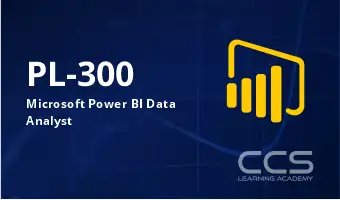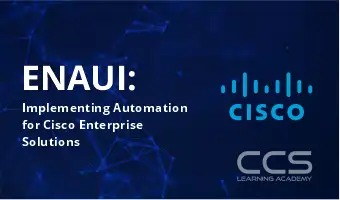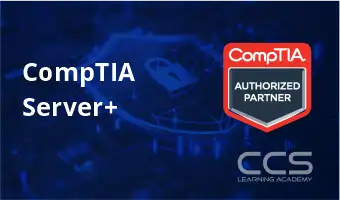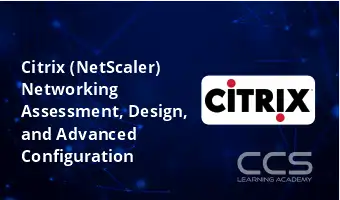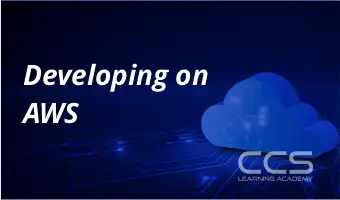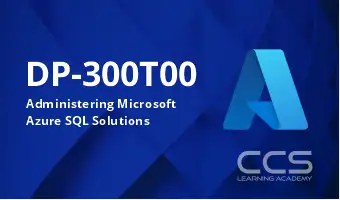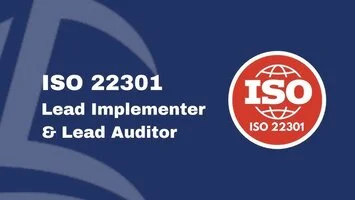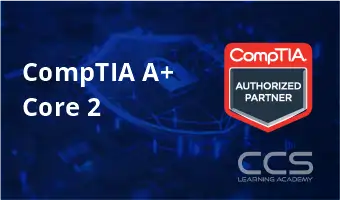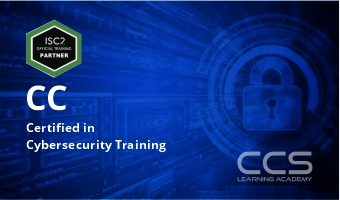Popular Topics
Data Analyst
CompTIA Security+
Risk and Compliance
Certified in Cybersecurity Training
CISSP
Certified in Governance
AWS
Developing Generative AI on AWS
Microsoft Office 365 Online
Microsoft Azure
CISSP Exam Preparation Course
Cloud Computing
Administering A SQL Database
CompTIA Cybersecurity Analyst
ITIL 4 Certification
Certified Cloud Security Professional
Azure AI Fundamentals
CompTIA Linux
PECB ISO 31000 Certification
Generative AI Applications on AWS
Penetration Testing Professional
Security Engineering on AWS
Developing AWS Services and Tools
ISO 22301 Certification
Chief Information Security Officer
ITIL 4 Foundation Certification Training
Penetration Testing Certification
Network Defender
AWS Cloud Essentials
SQL Data Models
SQL Server Integration
ISO / IEC 42001 Lead Auditor
Citrix
SQL Data Warehouse
ISO/IEC 42001 Lead Implementer
Microsoft PoerShell
Security on AWS
Cloud Operations on AWS
ISO 22301 Lead Auditor
SharePoint End User
Microsoft Azure Data Fundamentals
Certified Secure Software Lifecycle Professional
CompTIA
Cybersecurity Analyst
Microsoft Azure Certification
SQL Server Performance Tuning
ISO 31000 Certification
Advanced Developing on AWS
SQL Server Performance Optimization
ISO 31000 Risk Manager
Cybersecurity Certification
SQL Database Infrastructure
CompTIA A+ Core 1
CMMC Foundations
Azure Infrastructure Solutions
CompTIA Server
ISO / IEC 42001 Certification
Citrix Endpoint Management
CMMC Certification
Azure AI Solution
CompTIA PenTest
Microsoft Power BI Data Analyst
CMMC Certified Professional
Citrix Cloud with Amazon Web Services
CompTIA Data+
CompTIA Cloud Essentials+
Azure SQL Solutions
Lead Cloud Security Manager
Microsoft Azure for SAP Workloads
Microsoft Azure Administrator
PL-600 Power Platform Solution Architect
CompTIA Project
CompTIA A+ Core 2
Cloud Security Manager
CompTIA Network
Cloud Security Certification
ISO 22301 Lead Implementer
Lead Pen Test Professional
Microsoft Azure Fundamentals Training Certification
ISO 31000 Lead Risk Manager
Microsoft Project 2016 Level 1
CompTIA IT Fundamentals
Cybersecurity Foundation
Microsoft Project 2016: Level 2
CompTIA Cloud
All `Live Courses by Vendor Courses
Filter by Topic
Filter by Vendor
AZ-400: Designing and Implementing Microsoft DevOps Solutions
Course Description: This course provides the knowledge and skills to …
What you'll learn
Plan for the transformation with shared goals and timelines
Select a project and identify project metrics and Key Performance Indicators (KPI’s)
Create a team and agile organizational structure
Design a tool integration strategy
Design a license management strategy (e.g. Azure DevOps and GitHub users)
Design a strategy for end-to-end traceability from work items to working software
Design an authentication and access strategy
Design a strategy for integrating on-premises and cloud resources
Describe the benefits of using Source Control
Describe Azure Repos and GitHub
Migrate from TFVC to Git
Manage code quality including technical debt SonarCloud, and other tooling solutions
Build organizational knowledge on code quality
Explain how to structure Git repos
Describe Git branching workflows
Leverage pull requests for collaboration and code reviews
Leverage Git hooks for automation
Use Git to foster inner source across the organization
Explain the role of Azure Pipelines and its components
Configure Agents for use in Azure Pipelines
Explain why continuous integration matters
Implement continuous integration using Azure Pipelines
Define Site Reliability Engineering
Design processes to measure end-user satisfaction and analyze user feedback
Design processes to automate application analytics
Manage alerts and reduce meaningless and non-actionable alerts
Carry out blameless retrospectives and create a just culture
Define an infrastructure and configuration strategy and appropriate toolset for a release pipeline and application infrastructure
Implement compliance and security in your application infrastructure
Describe the potential challenges with integrating open-source software
Inspect open-source software packages for security and license compliance
Manage organizational security and compliance policies
Integrate license and vulnerability scans into build and deployment pipelines
Configure build pipelines to access package security and license ratings
Six Sigma Green Belt
Instructor-Led Vendor: PECB Quality Management What You’ll Learn This training …
What you'll learn
Learn the fundamental principles of process improvement
Manage projects using the familiar DMAIC methodology
Leverage the GRES methodology for problem-solving
Apply basic statistical analyses when appropriate to support improvement efforts
Learn how to verify process improvements by using statistical and common sense methods
Facilitate Green Belt process improvement projects
Learn how to shift processes, reduce variation, stabilize processes, and improve their capabilities
Six Sigma Yellow Belt
Six Sigma Yellow Belt training enables you to learn about …
What you'll learn
Understand the basic concepts of Six Sigma Yellow Belt
Acknowledge the value of Six Sigma to an organization
Understand the Six Sigma Yellow Belt tools and techniques used to improve processes, customer satisfaction and efficiency
ISO/IEC 27701 Lead Implementer
Course Description The ISO/IEC 27701 Lead Implementer training course enables …
What you'll learn
Master the concepts, approaches, methods and techniques used for the implementation and effective management of a PIMS.
Learn about the correlation between ISO/IEC 27701, ISO/IEC 27001, ISO/IEC 27002 and other standards and regulatory frameworks.
Understand the operation of a PIMS based on ISO/IEC 27701 and its principal processes.
Learn how to interpret the requirements of ISO/IEC 27701 in the specific context of an organization.
Develop the expertise to support an organization in effectively planning, implementing, managing, monitoring and maintaining a PIMS.
ISO/IEC 27035 Lead Incident Manager
Course Description ISO/IEC 27035 Lead Incident Manager training enables you …
What you'll learn
Master the concepts, approaches, methods, tools and techniques that enable an effective Information Security Incident Management according to ISO/IEC 27035
Acknowledge the correlation between ISO/IEC 27035 and other standards and regulatory frameworks
Acquire the expertise to support an organization to effectively implement, manage and maintain an Information Security Incident Response plan
Acquire the competence to effectively advise organizations on the best practices of Information Security Incident Management
Understand the importance of establishing well-structured procedures and policies for Incident Management processes
Develop the expertise to manage an effective Incident Response Team
ISO 9001 Lead Auditor
Course Description The ISO 9001 Lead Auditor training enables you to develop …
What you'll learn
Understand the operations of a Quality Management System (QMS) based on ISO 9001
Acknowledge the correlation between ISO 9001 and other standards and regulatory frameworks
Understand the auditor’s role to: plan, lead and follow-up on a management system audit in accordance with ISO 19011
Learn how to lead an audit and audit team
Learn how to interpret the requirements of ISO 9001 in the context of a QMS audit
Acquire the competencies of an auditor to: plan an audit, lead an audit, draft reports, and follow-up on an audit in compliance with ISO 19011
ISO 9001 Lead Implementer
Course Description ISO 9001 Lead Implementer training enables you to …
What you'll learn
Acknowledge the correlation between ISO 9001 and other standards and regulatory frameworks
Master the concepts, approaches, methods and techniques used for the implementation and effective management of a QMS
Learn how to interpret the ISO 9001 requirements in the specific context of an organization
Learn how to support an organization to effectively plan, implement, manage, monitor and maintain a QMS
Acquire the expertise to advise an organization in implementing Quality Management System best practices
ISO 22301 Lead Implementer
Course Description ISO 22301 Lead Implementer training course enables you …
What you'll learn
Gain a comprehensive understanding of the concepts, approaches, methods, and techniques used for the implementation and effective management of a BCMS
Learn how to interpret and implement the requirements of ISO 22301 in the specific context of an organization
Understand the operation of the business continuity management system and its processes based on ISO 22301
Acquire the necessary knowledge to support an organization in effectively planning, implementing, managing, monitoring, and continually improving a BCMS

